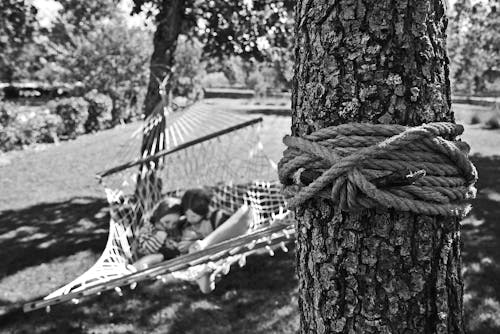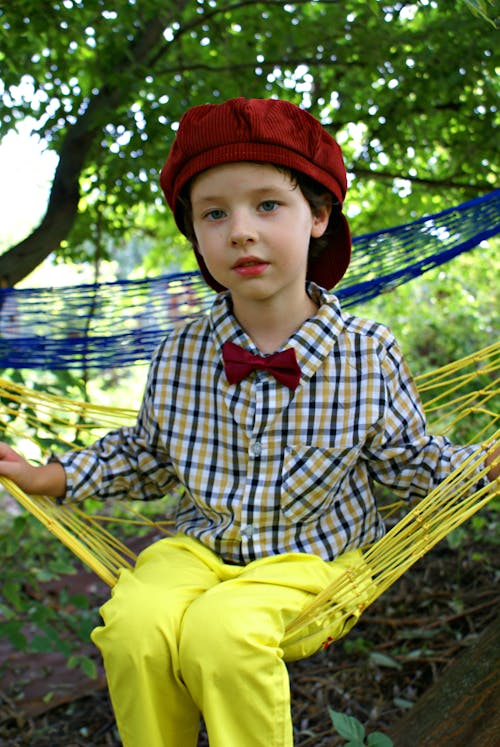
Hammocks for Children
With my love of hammocks, I thought it was time to understand more about hammocks for children as more of my friends have families that are interested in going on camping trips or as calming tools for their kids. In my exploration, I discovered just how valuable hammocks could be to children, whether in play, for rest or to calm an anxious child. I soon found there are many different types of hammocks for children and are used for many various reasons.
What is a Kids Hammock?
Children’s hammocks come in different shapes and sizes that are used both indoors and outdoors. These come in the form of:
- Traditional camping hammock.
- Swing chair.
- Therapy cuddle swings.
- Cacoons and Domes
Kids hammocks are generally smaller than adults and aren’t just used for camping and relaxation with children, but are also used for therapy and calming. Children love to snuggle in them and read books, listen to music and to enjoy the surrounds of nature, just like many adults do. But they also use it as a place to use their imagination and play make-believe. These hammocks are often quite roomy and have plenty of room for children to spread out in by themselves or to share their space with a friend.
How Do Hammocks Benefit kids?
There are many ways that hammocks benefit children, from sleep to therapy, each helping relax and nurture your child. They are made out of a variety of materials that are designed to create a cosy space and give children a feeling of balance. Let’s take a closer look at home beneficial hammocks can be:
- Sleep
For children who struggle with sleep or are restless of a night time, parents find the cocooning effect of a hammock is a great natural solution. Hammocks put your body in an elevated sleeping position, and with the gentle swaying motion, it helps rock your child into a restful slumber. Sleeping in a hammock is also known to help children and adults sleep longer and deeper because they feel secure being surrounded by the warmth of the material.
- Therapy
While there is no cure for autism or other similar challenges children live with, a hammock is often used as a tool for therapy. Children living with autism often rock back and forth as a method of comforting themselves and self-soothing; hammocks facilitate this motion calmly. Also, the cocooning atmosphere of a hammock provides autistic children with a sense of security and feelings of safety.
- Settling
After a tantrum, an upset or some bad news a hammock is perfect for helping a child calm and settle. Swinging in either a hammock chair or traditional hammock will help release endorphins and elevate their mood. If the hammock has a weight range for adults too, then it is also an excellent play to snuggle with your child after an upset and to find calm and peace together.
- Time Out
Now when I say time out, I don’t mean time out for challenging behaviours. Sometimes children want their own space, to be left alone and have a place of sanctuary. A camping hammock, cocoons or domes are perfect for this and is a place for your child to retreat to read, listen to music, meditate or have an afternoon nap.

Popular Hammocks for Children
There is such a good variety of hammocks for children; they come in all shapes and sizes. Some are perfect to use at home and indoors; others are great to take out into the garden or when going camping. These are 5 of the most popular types of hammocks for children:
- Kids Hammock for Camping
When camping with children, the best kind of hammock to use is a child-sized waterproof hammock for camping. These are portable, come with tree straps, carabiners and are made out of durable parachute nylon. These lightweight and compact hammocks are made especially for children and will be suitable for them up until around 11 or 12 years of age.
- Kids Hanging Tent
These bonsai style hanging tents are not only popular for children with sensory issues but are super spacious and cosy for chilling out in the back yard. These are generally made out of a waterproof material so can be used outdoors and indoors as required. These hammocks are easy to install and create a safe space for children to chill out.
- Kids Pod Swing Seat
These kids hammocks are a fun and sensory experience. A Kid’s Pod Swing Seat can be used indoors and outdoors and is usually made out of breathable cotton-canvas material. This hammock is often installed in an older child’s room and is easy to take down and store compactly as needed. Apart from its sensory benefits, the size is spacious and grows with your child.
- Cotton Kids Hammock
You will often find that cotton kids hammocks are used indoors as a relaxing place for them to chill. These are tailored to children with closed suspension for added safety. The cotton hammocks are ideal for children because they are durable, easy to clean and adhere to the highest safety standards.
- Macrame Hanging Swing
While these aren’t highly recommended for young children because of the holes in the macrame being a potential hazard, they are increasingly popular in tweens and teens bedrooms which is why they make our popular hammock list. This style of hammock is often used as a relaxing chair or to add flair to their bedroom. It holds a considerable amount of weight which means it is well suited to teens up until around the age of 16.
What Material is best for kids?
The type of hammock will depend on the kind of material that is best for kids. If you’re camping then a waterproof, nylon fabric is ideal and will keep your child warm and dry. A hanging pod is most likely to be used in the yard or indoors. It’s likely to be made out of a combination of cotton and spandex for flexibility. A children’s swinging chair hammock is mostly made out of a durable polyester and cotton combination that provides a warm, soft, but sturdy environment.
However, netting or macrame hammocks are better avoided because children can become caught up in the holes that are created by design.
Are Hammocks Safe for Children?
While we’ve determined that hammocks for children are indeed fun and provide a calming effect for children, but safety is an essential consideration. For babies and toddlers, refer to our blog post about baby hammocks, but as children get older, other safety considerations need to observed when your child is using a hammock.
The most common issues that you may come across when your child uses a hammock include:
- Potentially falling out
- Getting stuck in the netting or the material the hammock is made out of.
- Flip over from hammock being too taut.
These safety tips can help reduce the risk of these accidents from happening:
Safety Tips
Tip 1: Keep the hammock low to the ground and avoid any areas that may cause injury such as rocks, slopes or bodies of water.
Tip 2: Ensure that you follow all instructions when setting up the hammock so that it’s secure and ensure it has some give and isn’t too taut.
Tip 3: Check the hammock regularly for fraying, holds, tears and weakness.
Teaching your child some safety rules will help keep them safer when using a hammock. These can include:
- No Jumping in and out of the hammock.
- No Standing in the hammock.
- Make sure an adult is always close by.
- Do not get in the hammock feet first.
- Do not bounce or jump into the hammock.
Questions:
- How do I know my child is old enough to use a hammock?
A hammock is best used by a child that can safely get in and out of it, and they understand any rules you make for using it. However, some parents choose to use baby specific hammocks from birth for their child to sleep. Ultimately, whatever age you decide to let your child use a hammock, following the instructions and supervision is key.
- Is it safe for my child to play alone in a hammock?
Even if your child can safely use a hammock, they should always be supervised by an adult.
- Can I use my hammock indoors and outdoors?
Most hammocks can be used indoors and outdoors; however, you wouldn’t leave a non-waterproof hammock like a cotton hammock outdoors. Usually, they are easy to put up and down and can easily be packed away after use. You would only take camping specific hammocks on a camping trip as these are best suited to the conditions.
- What are hammocks for children weight limits?
Weight limits will vary depending on the hammock. Before buying one, it is best to check the weight limits and ensure they are suitable for your child’s age and weight range.